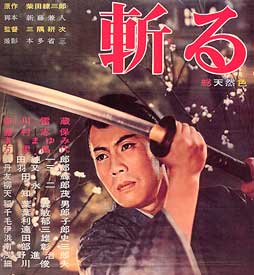
60 minutes in the beautiful Christina Galbo tries to escape the isolated boarding school she's brought to at the beginning of the movie. Is she running from some kind of fate too horrible to contemplate, a monster, black-gloved killer, or supernatural evil? No, she's running from a bunch of bullies. For the OTHER 40 minutes that follow, various figures walk around the school in the dark holding candelabras and looking alarmed or distraught, which doesn't say much in itself perhaps because great movies have been made about just that but if you're going to have characters walking around corridors and staircases you better be Alain Resnais or you better know how to light that staircase in bright apple reds and purples like Mario Bava. We know a killer stalks the perimeters of the school but his body count is pitiful and sparse and in the absence of the visceral horrors one expects to find in the giallo, we get no sense of sinister mysteries/unspeakable secrets festering behind a facade of order and piety and rightness which is the kind of movie La Residencia wants to be but doesn't quite know how to do it. We know something is off because girls are reported missing but we never get the foreboding mysterious atmosphere that says "something is seriously f-cking wrong here, man". When Serrador tries to comment on the sexual repression of the female students, he does so with quick-cutting hysterics and detail closeups of eyes and parted lips while high pitched "this-is-shocking" music blares in the background. None of the aetherial beauty and longing of PICNIC AT HANGING ROCK to be found here. It's all a bit clumsy and aimless, with no real sense of urgency or direction. A number of people are presented as suspects but there's little reason to care for the identity of a killer that goes unnoticed by the characters inside the movie. I like the first kill, the image of a knife hitting target superimposed over the anguished face of the victim as a lullaby chimes in the background, but the rest is too inconsequential for my taste. I have to say Serrador did much better with the killing children and paranoia du soleil of WHO CAN KILL A CHILD?
4/10















